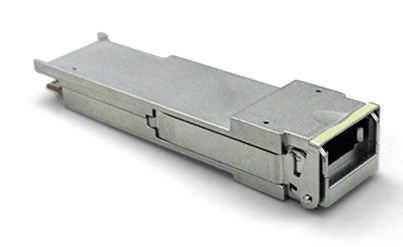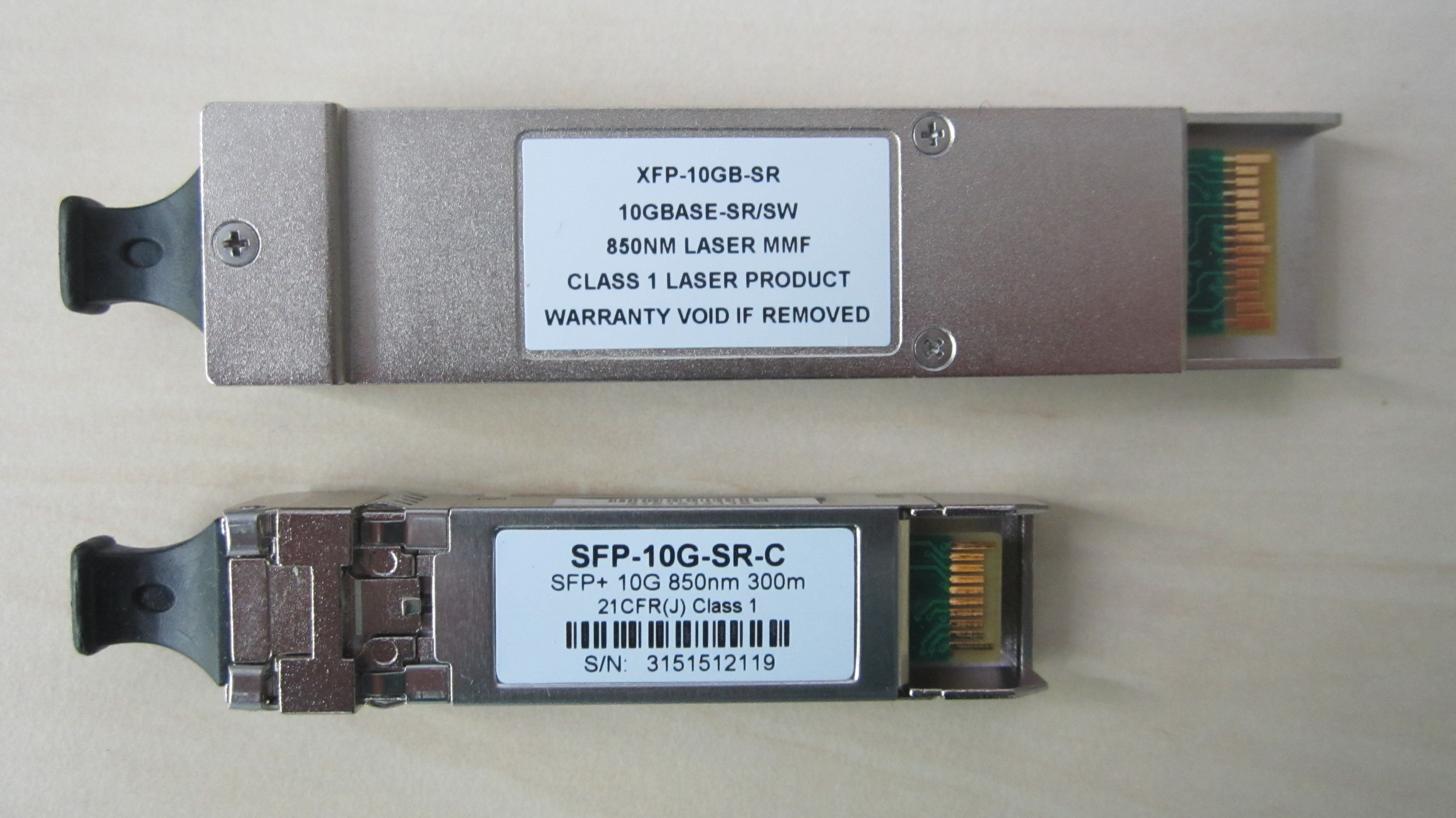|
CXP (connector)
In computer networking, CXP is a copper connector system specified by the InfiniBand Trade Association. It provides twelve 10 Gbit/s links suitable for single 100 Gigabit Ethernet, three 40 Gigabit Ethernet channels, or twelve 10 Gigabit Ethernet channels or a single Infiniband 12× QDR link. The ''C'' is the HEX digit of Twelve. The connector has 4 rows, each of 21 pin, total 84 pins See also * SFP * QSFP Small Form-factor Pluggable connected to a pair of fiber-optic cables Small Form-factor Pluggable (SFP) is a compact, hot-pluggable network interface module format used for both telecommunication and data communications applications. An SF ... * CFP References Electrical signal connectors {{electrical-connector-stub ... [...More Info...] [...Related Items...] OR: [Wikipedia] [Google] [Baidu] |
Computer Networking
A computer network is a set of computers sharing resources located on or provided by network nodes. The computers use common communication protocols over digital interconnections to communicate with each other. These interconnections are made up of telecommunication network technologies, based on physically wired, optical, and wireless radio-frequency methods that may be arranged in a variety of network topologies. The nodes of a computer network can include personal computers, servers, networking hardware, or other specialised or general-purpose hosts. They are identified by network addresses, and may have hostnames. Hostnames serve as memorable labels for the nodes, rarely changed after initial assignment. Network addresses serve for locating and identifying the nodes by communication protocols such as the Internet Protocol. Computer networks may be classified by many criteria, including the transmission medium used to carry signals, bandwidth, communications protocols ... [...More Info...] [...Related Items...] OR: [Wikipedia] [Google] [Baidu] |
InfiniBand Trade Association
InfiniBand (IB) is a computer networking communications standard used in high-performance computing that features very high throughput and very low latency. It is used for data interconnect both among and within computers. InfiniBand is also used as either a direct or switched interconnect between servers and storage systems, as well as an interconnect between storage systems. It is designed to be scalable and uses a switched fabric network topology. By 2014, it was the most commonly used interconnect in the TOP500 list of supercomputers, until about 2016. Mellanox (acquired by Nvidia) manufactures InfiniBand host bus adapters and network switches, which are used by large computer system and database vendors in their product lines. As a computer cluster interconnect, IB competes with Ethernet, Fibre Channel, and Intel Omni-Path. The technology is promoted by the InfiniBand Trade Association. History InfiniBand originated in 1999 from the merger of two competing designs: Futu ... [...More Info...] [...Related Items...] OR: [Wikipedia] [Google] [Baidu] |
100 Gigabit Ethernet
40 Gigabit Ethernet (40GbE) and 100 Gigabit Ethernet (100GbE) are groups of computer networking technologies for transmitting Ethernet frames at rates of 40 and 100 gigabits per second (Gbit/s), respectively. These technologies offer significantly higher speeds than 10 Gigabit Ethernet. The technology was first defined by the IEEE 802.3ba-2010 standard and later by the 802.3bg-2011, 802.3bj-2014, 802.3bm-2015, and 802.3cd-2018 standards. The standards define numerous port types with different optical and electrical interfaces and different numbers of optical fiber strands per port. Short distances (e.g. 7 m) over twinaxial cable are supported while standards for fiber reach up to 80 km. Standards development On July 18, 2006, a call for interest for a High Speed Study Group (HSSG) to investigate new standards for high speed Ethernet was held at the IEEE 802.3 plenary meeting in San Diego. The first 802.3 HSSG study group meeting was held in September 2006. In June 20 ... [...More Info...] [...Related Items...] OR: [Wikipedia] [Google] [Baidu] |
40 Gigabit Ethernet
40 Gigabit Ethernet (40GbE) and 100 Gigabit Ethernet (100GbE) are groups of computer networking technologies for transmitting Ethernet frames at rates of 40 and 100 gigabits per second (Gbit/s), respectively. These technologies offer significantly higher speeds than 10 Gigabit Ethernet. The technology was first defined by the IEEE 802.3ba-2010 standard and later by the 802.3bg-2011, 802.3bj-2014, 802.3bm-2015, and 802.3cd-2018 standards. The standards define numerous port types with different optical and electrical interfaces and different numbers of optical fiber strands per port. Short distances (e.g. 7 m) over twinaxial cable are supported while standards for fiber reach up to 80 km. Standards development On July 18, 2006, a call for interest for a High Speed Study Group (HSSG) to investigate new standards for high speed Ethernet was held at the IEEE 802.3 plenary meeting in San Diego. The first 802.3 HSSG study group meeting was held in September 2006. In June 20 ... [...More Info...] [...Related Items...] OR: [Wikipedia] [Google] [Baidu] |
10 Gigabit Ethernet
10 Gigabit Ethernet (10GE, 10GbE, or 10 GigE) is a group of computer networking technologies for transmitting Ethernet frames at a rate of 10 gigabits per second. It was first defined by the IEEE 802.3ae-2002 standard. Unlike previous Ethernet standards, 10 Gigabit Ethernet defines only full-duplex point-to-point links which are generally connected by network switches; shared-medium CSMA/CD operation has not been carried over from the previous generations Ethernet standards so half-duplex operation and repeater hubs do not exist in 10GbE. The 10 Gigabit Ethernet standard encompasses a number of different physical layer (PHY) standards. A networking device, such as a switch or a network interface controller may have different PHY types through pluggable PHY modules, such as those based on SFP+. Like previous versions of Ethernet, 10GbE can use either copper or fiber cabling. Maximum distance over copper cable is 100 meters but because of its bandwidth requirements, higher ... [...More Info...] [...Related Items...] OR: [Wikipedia] [Google] [Baidu] |
Infiniband
InfiniBand (IB) is a computer networking communications standard used in high-performance computing that features very high throughput and very low latency. It is used for data interconnect both among and within computers. InfiniBand is also used as either a direct or switched interconnect between servers and storage systems, as well as an interconnect between storage systems. It is designed to be scalable and uses a switched fabric network topology. By 2014, it was the most commonly used interconnect in the TOP500 list of supercomputers, until about 2016. Mellanox (acquired by Nvidia) manufactures InfiniBand host bus adapters and network switches, which are used by large computer system and database vendors in their product lines. As a computer cluster interconnect, IB competes with Ethernet, Fibre Channel, and Intel Omni-Path. The technology is promoted by the InfiniBand Trade Association. History InfiniBand originated in 1999 from the merger of two competing designs: F ... [...More Info...] [...Related Items...] OR: [Wikipedia] [Google] [Baidu] |
Hexadecimal
In mathematics and computing, the hexadecimal (also base-16 or simply hex) numeral system is a positional numeral system that represents numbers using a radix (base) of 16. Unlike the decimal system representing numbers using 10 symbols, hexadecimal uses 16 distinct symbols, most often the symbols "0"–"9" to represent values 0 to 9, and "A"–"F" (or alternatively "a"–"f") to represent values from 10 to 15. Software developers and system designers widely use hexadecimal numbers because they provide a human-friendly representation of binary-coded values. Each hexadecimal digit represents four bits (binary digits), also known as a nibble (or nybble). For example, an 8-bit byte can have values ranging from 00000000 to 11111111 in binary form, which can be conveniently represented as 00 to FF in hexadecimal. In mathematics, a subscript is typically used to specify the base. For example, the decimal value would be expressed in hexadecimal as . In programming, a number of ... [...More Info...] [...Related Items...] OR: [Wikipedia] [Google] [Baidu] |
Small Form-factor Pluggable Transceiver
Small Form-factor Pluggable connected to a pair of fiber-optic cables Small Form-factor Pluggable (SFP) is a compact, hot-pluggable network interface module format used for both telecommunication and data communications applications. An SFP interface on networking hardware is a modular slot for a media-specific transceiver, such as for a fiber-optic cable or a copper cable. The advantage of using SFPs compared to fixed interfaces (e.g. modular connectors in Ethernet switches) is that individual ports can be equipped with different types of transceiver as required. The form factor and electrical interface are specified by a multi-source agreement (MSA) under the auspices of the Small Form Factor Committee. The SFP replaced the larger gigabit interface converter (GBIC) in most applications, and has been referred to as a Mini-GBIC by some vendors. SFP transceivers exist supporting synchronous optical networking (SONET), Gigabit Ethernet, Fibre Channel, PON, and other c ... [...More Info...] [...Related Items...] OR: [Wikipedia] [Google] [Baidu] |
QSFP
Small Form-factor Pluggable connected to a pair of fiber-optic cables Small Form-factor Pluggable (SFP) is a compact, hot-pluggable network interface module format used for both telecommunication and data communications applications. An SFP interface on networking hardware is a modular slot for a media-specific transceiver, such as for a fiber-optic cable or a copper cable. The advantage of using SFPs compared to fixed interfaces (e.g. modular connectors in Ethernet switches) is that individual ports can be equipped with different types of transceiver as required. The form factor and electrical interface are specified by a multi-source agreement (MSA) under the auspices of the Small Form Factor Committee. The SFP replaced the larger gigabit interface converter (GBIC) in most applications, and has been referred to as a Mini-GBIC by some vendors. SFP transceivers exist supporting synchronous optical networking (SONET), Gigabit Ethernet, Fibre Channel, PON, and other communi ... [...More Info...] [...Related Items...] OR: [Wikipedia] [Google] [Baidu] |
C Form-factor Pluggable
The C form-factor pluggable (CFP, 100G form factor pluggable, where ''C'' is la, centum "hundred") is a multi-source agreement to produce a common form-factor for the transmission of high-speed digital signals. The c stands for the Latin letter C used to express the number 100 (''centum''), since the standard was primarily developed for 100 Gigabit Ethernet systems. CFP standardization The CFP transceiver is specified by a multi-source agreement (MSA) among competing manufacturers. The CFP was designed after the small form-factor pluggable transceiver (SFP) interface, but is significantly larger to support 100 Gbit/s. While the electrical connection of a CFP uses lanes in each direction (RX, TX), the optical connection can support both and variants of 100 Gbit/s interconnects (typically referred to as 100GBASE-SR10 in 100 meter MMF, 100GBASE-LR10 and 100GBASE-LR4 in 10 km SMF reach, and 100GBASE-ER10 and 100GBASE-ER4 in 40 km SMF reach respectively.) ... [...More Info...] [...Related Items...] OR: [Wikipedia] [Google] [Baidu] |




